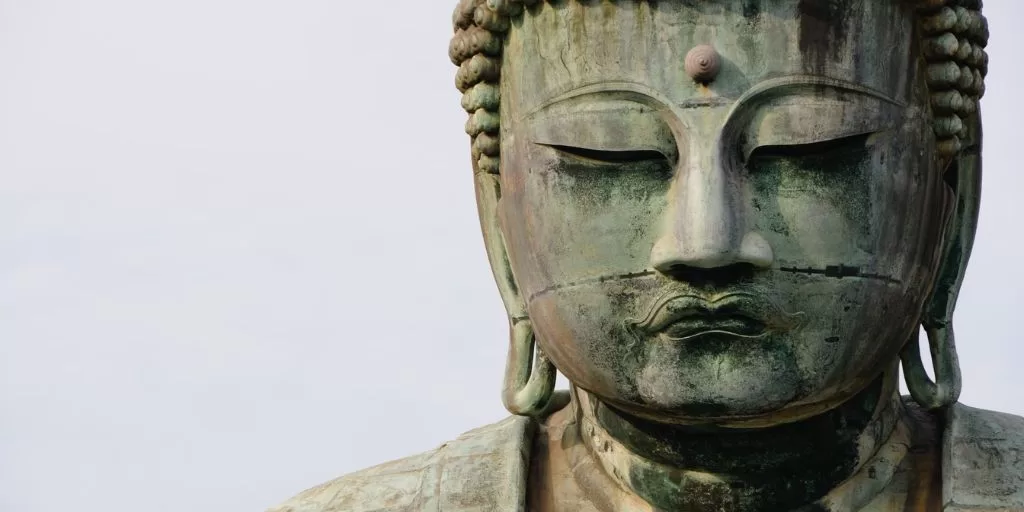In today’s chaotic world, many of us are searching for ways to find balance and inner peace. We yearn for a sense of power over our lives, minds, and emotions. One popular path is the exploration of meditation vs mindfulness – two practices that share similarities but also have significant differences. Today, we will discuss what these two approaches entail and how they can be used to increase one’s personal power.
Mindfulness and meditation both involve intentionally focusing on your physical sensations as well as mental states such as thoughts, feelings, and emotions. However, there are some key distinctions between them. Mindfulness often requires more active engagement with internal experiences than does traditional meditation practice (although mindfulness is a type of meditation); it encourages being aware of the present moment without judgment or reaction. On the other hand, meditation often involves disengaging from everyday life in order to experience deeper stillness and quietude within oneself (however, it’s not the only form of meditation).
Regardless of which approach you choose – whether mindfulness or other forms of meditation – you can gain greater insight into yourself and develop empowering control over your thoughts and emotions. Read on to learn more about the differences between these two powerful practices so that you can decide which one is right for you!
Table of Contents
- 1 Definition Of Meditation
- 2 Definition Of Mindfulness
- 3 Key Principles
- 4 Practicing Meditation
- 5 Practicing Mindfulness
- 6 Benefits Of Both Practices
- 7 Scientific Evidence For Both Practices
- 8 Potential Drawbacks
- 9 Popular Techniques
- 10 Combining Meditation And Mindfulness
- 11 Frequently Asked Questions
- 11.1 What Is The Most Effective Way To Combine Meditation And Mindfulness?
- 11.2 How Often Should I Practice Meditation And Mindfulness?
- 11.3 Is There Any Age Limit For Practicing Meditation And Mindfulness?
- 11.4 Are There Any Potential Risks Associated With Practicing Meditation And Mindfulness?
- 11.5 Do I Need To Subscribe To A Particular Belief System In Order To Practice Meditation And Mindfulness?
- 12 Summary
Definition Of Meditation

Meditation is an activity that many people practice to help them relax, and gain clarity and perspective in their lives. It’s a concept that has been around for millennia, but it recently has become more popular due to its incredible benefits on both the body and mind. So what exactly does meditation mean? What can you expect when you meditate? Let’s take a look at what meditation is all about.
To start off, let’s define meditation as “a conscious effort to focus one’s attention on a chosen focal point with the intention to affect one’s mind or body”. Meditation often involves breathing exercises or mindfulness techniques (yes, mindfulness is a form of meditation) such as focusing on sounds like chanting mantras or repeating words of affirmation. It can also involve visualizations, such as imagining yourself in a peaceful place or picturing your desired outcomes in life. All of these methods are designed to bring peace and awareness into our daily lives by calming our minds and bodies.
In addition to helping us achieve relaxation, there are several other potential benefits associated with meditation. Studies have found that regular practice can reduce stress levels, improve concentration, increase self-awareness, and even boost immunity! People who meditate regularly may notice improved overall mental health, better sleep quality, increased creativity, and enhanced insight into themselves and others.
So if you’re looking for ways to reduce stress while gaining greater clarity in your life, then give meditation a try! You’ll be surprised how much it can enhance your well-being – physically, mentally, and emotionally – without any extra effort on your part.
P.S. Meditation can have many forms. Some of them are: mantra meditation (which involves chanting), chakra and energy flow meditation, Tummo (a practice that allows to control one’s body temperature), mind hacking aka mind programming, self-hypnosis, progressive muscle relaxation, mental traveling, visualization training, and more. The point is that meditation is any practice that involves concentrating one’s mind on something specific, whether it be heart rate, thoughts, or a mantra.
Definition Of Mindfulness
Do you have a deep, burning desire to become more mindful? Are you looking for the secret to unlock all of life’s mysteries and gain superhuman powers? Look no further! Mindfulness is here and it promises a world of opportunity. But what exactly is mindfulness? Let’s take a look at defining this mysterious concept.
Mindfulness can be defined as “the practice of being present in the moment”. It involves noticing your thoughts, feelings, physical sensations, and environment without judgment or attachment. It is usually practiced to increase one’s awareness (not necessarily just self-awareness, it can also be used to increase the awareness of one’s surroundings). The goal is to observe yourself objectively, rather than getting caught up in thought patterns that lead to emotional reactions or avoidance behaviors.
So how does one go about practicing mindfulness? Some popular ways include focusing on your breath, engaging in Yoga or Tai Chi poses, walking meditation, chanting mantras or affirmations – even eating slowly and savoring each bite can be mindfulness practice! All of these activities help bring us into the present moment so we can appreciate our lives while learning greater self-awareness and acceptance.
To summarize it in one sentence, mindfulness can be defined as the practice of paying attention.
This brings us back around to why we are so attracted to mindfulness in the first place: its power to transform our lives by increasing clarity, reducing stress levels, and improving overall well-being. So if you’re ready to tap into this superpower – whether it’s through breathing exercises or yoga postures – then let’s get started!
Key Principles

Though mindfulness and meditation share a few key principles, there are also some important distinctions between the two. To gain an understanding of how to effectively practice both disciplines, it is essential to know the fundamentals behind each one.
When discussing meditation principles, we must first understand that this type of practice involves focusing your attention on something specific – such as your breath, chakras, or a particular mantra – the objectives of meditation can be various (not limited to just improving one’s clarity and focus). This can be done through seated posture, walking meditation, or even laying down in savasana (corpse pose). Alternatively, one might choose not to alter their body position at all and focus solely on the mind. It’s also important to remember that while meditating, distractions will come up but don’t get discouraged! Simply acknowledge them and let them pass before returning back to your chosen object of focus. With regular practice, meditation can teach us how to better manage our thoughts and feelings so we can respond rather than react in any given situation.
On the other hand, mindfulness principles involve being aware of our thoughts, breath, sensations, feelings, or environment without judgment or attachment. In other words, instead of getting hooked by our emotions like fear or anger – which often lead us down rabbit holes – mindful awareness teaches us how to observe ourselves objectively from a place of non-reactivity. That could mean noticing sensations in your body when feeling stressed out or tuning into what’s going on internally during difficult conversations at work. The goal here is not necessarily to change anything but simply to become more aware of oneself (or one’s surroundings) in order for greater self-understanding and acceptance.
So whether you choose to pursue mindful meditation or mindfulness practices alone, having knowledge about these key concepts can help you unlock all the benefits they have to offer: increased mental clarity and emotional stability; improved physical well-being; reduced stress levels; enhanced creativity; greater self-awareness; and so much more!
Practicing Meditation
There is no denying the immense power of meditation. Studies show that those who meditate regularly experience lower levels of stress and anxiety, improved focus, increased self-awareness, better sleep quality, and even more creativity! But how does one start their own practice? Here are a few tips for getting started:
One great way to begin your journey with meditation is by exploring different techniques. From guided visualization to mantra recitation, there’s something out there for everyone. There are also plenty of helpful apps available such as Headspace or Calm that provide short exercises to get you familiarized with the basics. If tech isn’t your thing, consider joining a local meditation class or going on a retreat in order to really immerse yourself into the practice so you can reap all its benefits faster.
Chakra meditation is another wonderful way to start. In this type of practice, the person focuses on their energy centers – known as chakras – in order to create balance and harmony throughout their body and mind. The seven main chakras are located along the spine from the base to the top of one’s head, each representing specific qualities such as love, power, creativity, and safety. By connecting with these energetic centers through meditation, a person can become aware of any imbalances in their life and take steps toward healing them. More specifically, focusing attention on each individual chakra gives a person insight into how it is functioning which can help them learn more about themselves and how to live a more meaningful life.
Other good types of meditation for beginners can include imagery training (visualization practice), or more esoteric training programs such as Liber Null, Liber MMM, or Liber KKK created by occult practitioners.
No matter which path you choose, just remember it takes time and patience – like any skill – until you master it. The best part about meditation is that you don’t need much; just settle into a comfortable position (in whichever environment works best for you) and simply observe what arises within your mind with the aim to get to know yourself better as it will help you gain control over your psyche in the future. Over time, this simple act can help us become aware of our innermost thoughts and feelings while providing us with an invaluable toolkit for responding rather than reacting during challenging moments in life.
In other words, take time each day to be still and focus on your thoughts – whether it’s through mindful breathing or sitting in silent contemplation – so we can reconnect with ourselves at a deeper level and learn how to navigate life’s ups and downs with ease.
P.S. Stillness can be a form of training on its own as well as a way to make meditation easier as eliminating body movements makes it easier to focus on your mind, however, advanced practitioners do not have to be still in order to concentrate.
Practicing Mindfulness
Mindfulness is a practice that emphasizes being present in the moment and observing your thoughts without judgment or attachment. It has been gaining popularity as an effective way to reduce stress, cultivate inner peace, and create more meaningful connections in our lives. Unlike meditation which can have many uses and can be practiced in various ways, mindfulness has its boundaries and focuses on simply noticing what’s happening within us (or around us) while cultivating acceptance of all experiences rather than striving toward some ideal state.
Though both practices have similar goals, there are distinct differences between them. Here are 4 key ways they differ:
- A mindful approach encourages us to shift away from autopilot mode by paying attention to our immediate physical sensations, emotions, and environment with curiosity and kindness; whereas, meditative techniques involve focusing the mind on one thing such as a mantra or guided visualization and help bring the desired effect.
- In mindfulness practice we strive for awareness of each moment without necessarily changing anything; however, when it comes to meditating, we can use certain techniques like breathwork or mantras that can lead to lasting changes in behavior over time.
- Mindful living helps us tap into our own intuition by recognizing how to respond skillfully during difficult situations instead of reacting out of habit; conversely, meditation allows us to experience greater clarity of thought so that we can make better decisions going forward.
- With mindfulness you don’t need any specific tools – just yourself! But with meditation, there are plenty of different methods available depending on what works best for you (e.g., yoga poses, chanting, mind-programming techniques, extensive training programs, etc.).
Both meditation and mindfulness are forms of inner work that offer powerful benefits – whether it’s increased self-awareness through mindful living or enhanced concentration through meditation techniques – that ultimately promote health and well-being at every level.
Benefits Of Both Practices

The practice of meditation and mindfulness can be likened to a journey through the landscape of our inner being. They are two distinct paths, each offering its own unique benefits that can help us on this path toward greater understanding and well-being.
Like any journey, it begins with taking those first few steps – namely recognizing how powerful these practices are when it comes to improving overall mental health and stress relief. Meditation (among its many other benefits) can offer an opportunity for stillness, a space to quiet the mind and find grounding in the present moment. This is incredibly beneficial for emotional well-being as it allows us to let go of unhelpful thoughts or worries and just be here now. Mindfulness encourages us to observe our thoughts without judgment or attachment so we gain insight into why we think, feel, or act certain ways; ultimately leading to more conscious decision-making instead of relying on autopilot mode all the time.
Both meditation and mindfulness also provide tangible physical benefits such as improved sleep quality, increased focus, better memory recall – even pain management! On a deeper level, they both offer access to higher states of consciousness – allowing us to explore realms beyond what we know intellectually which helps cultivate peace within ourselves while enhancing connections with others.
These ancient healing tools are easily accessible yet highly effective if practiced regularly – providing nourishment for body, mind, and spirit alike. With mindful living, we become aware of how connected everything is around us while meditative techniques give us valuable skills like breathwork and visualization that allow us to stay rooted in the present during times of challenge or change. By embracing these complementary pathways toward transformation we open up infinite possibilities along life’s journey!
Scientific Evidence For Both Practices
The potential benefits of meditation and mindfulness are vast, but what does the scientific evidence say? Studies have shown that both practices can be remarkably powerful when it comes to improving mental health. Research has suggested that regular practice of meditation may reduce stress levels significantly while also promoting positive emotions like joy, equanimity, and contentment. Mindfulness too is a valuable tool in managing anxiety and depression, with studies indicating enhanced emotional regulation over time as well as improved attention span and memory recall.
Scientific research into the effects of meditation on physical well-being shows exciting results. It appears to reduce inflammation which could lead to better cardiovascular health, improve immune system functioning, lower blood pressure, and even support cancer treatment! When it comes to mindfulness-based interventions there is growing evidence for their effectiveness in treating chronic pain; helping individuals develop healthier coping strategies so they can move forward from difficult experiences more easily.
At this point, one thing is clear – whether we’re talking about the psychological or physiological realm these two ancient healing tools offer us an incredible opportunity for transformation through self-knowledge. As such, many researchers believe that further exploration into their potential applications should take place in order to gain deeper insight into how they might benefit our quality of life across all aspects.
It’s no secret that both meditation and mindfulness bestow tremendous gifts upon those who make them part of their lives – offering proven pathways toward greater awareness, balance, and clarity within ourselves. With continued study into their power, practitioners around the world will continue to access these powerful tools for years to come!
Potential Drawbacks
Despite the health-promoting potential of both mindful meditation and mindfulness, there are also some potential drawbacks to be aware of. When it comes to meditative practice, side effects can include feelings of restlessness or agitation if not practiced with awareness; this is particularly true in those who have had no prior experience with the technique. Moreover, it’s important to bear in mind that when entering a state of deep relaxation certain memories or emotions may surface which can be overwhelming and uncomfortable for many individuals.
While mindfulness has been found to offer numerous benefits, it too carries its own challenges. These practices typically require regular commitment in order to maintain their effects as well as acceptance of all experiences without judgment – something which runs counterintuitively for many people. If practitioners don’t take time out from everyday life regularly enough then they run the risk of becoming overwhelmed by stressors present within their environment, potentially negating any positive effects achieved through training thus far.
Those embarking on either type of practice could do so under qualified guidance if they want to eliminate all the potential drawbacks as without the right advice, techniques may be misused resulting in further distress instead of relief – an outcome likely to undo much of the progress made up until that point but generally speaking, the chances of a beginner messing up his mental health due to improper use of meditation and mindfulness techniques are rather low (although it can happen).
Finally, while these approaches offer great promise for alleviating physical and mental suffering at least initially, we must keep in mind that long-term success relies heavily upon sustainable dedication toward our chosen path.
In summary then, while mindful meditation and mindfulness can open us up to powerful possibilities within ourselves they come accompanied by potential pitfalls along the way – making them worthy only of those willing to commit fully and exercise caution throughout each step taken.
Popular Techniques
Having discussed the potential drawbacks of mindful meditation and mindfulness, let’s now explore some popular techniques available to us. When it comes to meditative practice there are many options to choose from:
- Guided Meditation – involves being guided through exercises by a trained facilitator, usually with background music or soundscapes for added effect.
- Mindful Eating – focuses on savoring each bite as well as noticing how food affects our bodies before, during, and after consumption.
- Mindful Breathing – concentrates on inhaling and exhaling naturally while bringing awareness to our breath throughout the day.
- Open Awareness – allows practitioners to observe their external environment with an open mind in order to gain insight into their inner world.
- Chakra Meditation – concentrates on bringing awareness to the energy centers and manipulating the energy flow to improve spiritual well-being
- Ming Programming – allows one to program their mind by entering a state of deep trance and engraving specific instructions into their subconsciousness.
- Pranayama – aka breath meditation; it focuses on breathing practices that affect not just one’s mind but also the body (on the physiological level).
These approaches can be used independently or together depending on individual preference – offering new ways of connecting with ourselves that bring about profound changes over time. Furthermore, they have been consistently shown to reduce stress levels while heightening feelings of well-being; this makes them particularly attractive propositions for those seeking greater balance within themselves and the wider world around them. Finally, due to their accessibility, these practices are ideal starting points for anyone keen to begin exploring the power of conscious living!
Combining Meditation And Mindfulness
Having discussed the various approaches to meditation and mindfulness, it’s time to explore how these two seemingly opposing concepts can be combined. After all, why limit ourselves to just one when we could potentially benefit from both?
The answer lies in discovering how each practice can complement the other; many practitioners find that a blend of mindful meditation helps them achieve deeper levels of relaxation as well as increased focus on their day-to-day activities. In addition, combining the two allows us to become more aware of our physical sensations while also cultivating an acceptance of life’s impermanence. Ultimately, this combination is beneficial because it offers up new perspectives which may otherwise have been left unexplored – thus providing greater insight into our innermost selves.
It’s worth noting that when combining mindfulness and meditation there is no single right or wrong way – after all, our experience will often depend on individual preferences and goals. Having said that, some useful tips include using guided visualization techniques during periods of quiet contemplation or simply noticing any subtle changes within your body before beginning a meditative session. As you gain confidence with this approach it’ll become easier to recognize what works best for you!
In short, combining meditation and mindfulness can open the door to heightened understanding and personal growth – if we allow ourselves to take advantage of its potential benefits.
Frequently Asked Questions

Both meditation and mindfulness are covered in many myths and mysteries. Therefore, I have prepared this FAQ section to support you, dear reader, on your wisdom-gathering journey. Continue reading to find the answers to the frequently asked questions about meditating and practicing mindfulness!
What Is The Most Effective Way To Combine Meditation And Mindfulness?
The power of combining meditation and mindfulness is undeniable. But how can one achieve the most effective combination? The answer lies in understanding both techniques, their differences, and similarities – then applying that knowledge to create a personalized approach.
Meditation has long been used as a way to relax the body while seeking inner peace. It may consist of various methods such as focusing on breathing or repeating certain words which allow practitioners to take control over their own mental states. On the other hand, mindfulness involves being aware of current thoughts without judgment and acceptance of all emotions experienced during it. Both provide numerous benefits but different ways of achieving them.
To combine these two powerful practices together, one must firstly recognize their respective capabilities. Meditation provides more focused attention on specific aspects while mindfulness helps us observe our physical sensations without criticism; this allows us to gain further insight into our lives through increased self-awareness and clarity. To use both successfully, one should practice various kinds of meditation and mindfulness methods accordingly; from simple breathing exercises to longer meditations like Vipassana, incorporating a variety of techniques will ensure maximum results are achieved when combined with mindful observation throughout day-to-day activities.
The truth is, there is no best method to combine these two practices, but I can give you a couple of tips that can significantly improve your results. Firstly, incorporate mindfulness into every single meditation you practice which will result in multi-tasking; for instance, you can use chakra meditation in combination with mindfulness to consciously monitor how each technique is affecting your mental state. Secondly, you can use mindfulness to direct your attention to a specific body area or even organ to build a mind-body connection and try to influence your heartbeat or muscle tension through sheer concentration. Finally, incorporating mindfulness into mind-hacking techniques will help you better understand their effect on your mind.
When transitioning between meditation and mindfulness at any point in time, we need to remember not just its individual benefits but also how they work together as an integrated whole: start with smaller periods where focus on breath is maintained before moving onto larger ones involving emotional awareness. As we become familiar with both approaches, integrating them becomes easier until we finally reach a state of harmony within ourselves by unifying what was once thought to be opposing forces – allowing us access to greater levels of personal power than ever imagined possible!
How Often Should I Practice Meditation And Mindfulness?
When it comes to meditation and mindfulness, one of the most common questions asked is how often should they be practiced? There’s no single answer that fits all – as with any type of self-improvement practice, it depends on your individual goals. However, there are some general guidelines you can follow when developing a regular routine for yourself.
One way to approach this is to think about both meditation and mindfulness in terms of frequency rather than duration. You may find that meditating twice a day works better for you than once or three times, depending on what kind of results you’re seeking. Likewise, if you want to establish a daily mindfulness habit, try setting aside 10-20 minutes each morning before starting your day instead of trying to fit it into an already busy schedule at night. This will help ensure that you stay consistent with your practice.
It’s also important to consider your own needs while determining the best meditation and mindfulness frequencies for yourself. If stress management is one of your primary aims, then shorter but more frequent sessions might work better than longer ones practiced less frequently. On the other hand, if spiritual growth is something that speaks to you, then taking part in longer meditations every few days could provide greater benefit. Taking the time to figure out what works best for you is essential when creating an effective regimen.
In addition to figuring out the optimal frequency of meditation and mindfulness practices for yourself, another key component of success lies in committing to consistency over time. If possible, set reminders throughout the week so that you don’t forget or let yourself off easy from following through with your routine; having accountability partners can also be helpful here! Keeping track of progress by noting down insights gained during each session can help motivate you too – after all, personal transformation takes effort and dedication!
Is There Any Age Limit For Practicing Meditation And Mindfulness?
Have you ever wondered if there is an age limit for practicing meditation and mindfulness? It’s a common question that many people have, especially those who are looking to get into the practice.
Meditation and mindfulness offer incredible benefits, regardless of your age. However, it’s important to keep in mind that everyone will experience these practices differently based on their individual circumstances. For instance, younger individuals may not be able to sit still or concentrate as easily as adults do when meditating or engaging in mindfulness activities. Similarly, children might need more guidance and structure than adults do when participating in such exercises.
That said, there isn’t any set rule about what age is appropriate for beginning a meditation or mindfulness practice. Instead, it should be tailored to each person’s level of physical ability and comfort with the concepts being practiced. As long as the goal is to connect with yourself and gain greater insight into how your thoughts and emotions work together, then anyone can benefit from this type of spiritual exploration – no matter their age!
It’s also worth noting that while both meditation and mindfulness can share some similarities – such as focusing on breathwork – they are two distinct practices that require different approaches depending upon the practitioner’s goals. Therefore, taking time to explore the nuances between them can help ensure you find the best fit for your needs so that you can make the most out of each session.
No matter your age or experience level with either form of spiritual practice, it’s never too late (or early) to start exploring ways to deepen your understanding of yourself through mindful techniques like meditation and contemplation.
Are There Any Potential Risks Associated With Practicing Meditation And Mindfulness?
Practicing meditation and mindfulness is becoming increasingly popular, but are there any potential risks associated with it? Although generally considered safe for most people, meditating or being mindful can sometimes come with certain dangers. While understanding the risky side of these practices is important, one should also be aware of how to mitigate them.
The first step in avoiding potential risks related to meditation and mindfulness is knowing what they are. We cannot deny the fact that both activities require a person’s full attention; thus, if done incorrectly, could cause physical discomforts such as headaches or muscle tension. Other potential risks include:
- Over-Stimulation Risk – too much meditation or mindfulness practice can lead to exhaustion and even depression due to increased levels of stress hormones like cortisol.
- Unmet Expectations – when someone has unrealistic expectations about their progress in meditation or mindfulness, this can create feelings of frustration which may have negative consequences on mental health.
- Negative Experiences – some individuals might experience unpleasant thoughts while practicing mindfulness or during deep states of concentration while doing meditations; although usually not dangerous, these kinds of experiences must still be taken into consideration.
- Focusing On The Wrong Things – focusing on materialistic goals too much and ignoring inner growth can become an obstacle to personal development and pose a danger to our well-being.
It’s clear that knowledge about the potential risks associated with meditation and mindfulness is essential in order to enjoy its benefits safely; however, by taking precautions into account we can easily limit those risks and make sure that our practices remain enjoyable and beneficial. One way to do so is by finding a qualified teacher who will guide you through your journey – having support makes all the difference! Additionally, setting realistic expectations from the start helps keep motivation high while preventing burnout caused by too much effort put into achieving results quickly. Lastly, regular breaks between sessions provide time to reflect on your progress and readjust accordingly.
Meditation and mindfulness offer many opportunities for personal growth; yet proper caution needs to be taken in order for us to benefit fully without putting ourselves at risk physically or mentally. By following these simple guidelines we ensure a positive outcome from our practices – something everyone deserves!
Do I Need To Subscribe To A Particular Belief System In Order To Practice Meditation And Mindfulness?
Do I need to subscribe to a particular belief system in order to practice meditation and mindfulness? This is an important question for many people who are interested in exploring the benefits of both practices. It’s understandable that one might assume they require adherence to certain spiritual beliefs, however, this isn’t necessarily true.
Meditation and mindfulness can be practiced without subscribing to any kind of spiritual or religious belief system. In fact, these techniques don’t even have to be linked with spirituality at all – though it’s certainly possible if that appeals to you. The main focus should simply be on being present and aware – something anyone can do regardless of their specific beliefs.
At the same time, there are some aspects of mindfulness and meditation that could be seen as having more of a spiritual foundation – such as chanting mantras, repeating affirmations, or using esoteric visualizations practices. But again, none of these things are necessary; rather they provide additional tools for those who wish to explore them further. Nonetheless, engaging in any sort of spiritual practice does not require subscribing to a particular belief system either – as long as your intention is about self-growth and inner peace, you can concentrate on your own spiritual growth rather than following any sort of system.
Ultimately, whether you choose to incorporate any type of spiritual element into your mindfulness or meditation routine is up to you; all that really matters is that you feel comfortable with what you’re doing. After all, cultivating greater awareness within yourself requires connecting with yourself on a deeper level – no matter how you choose to go about it!
Summary

In conclusion, both meditation and mindfulness provide a variety of mental health benefits that can help improve one’s overall well-being. The key to getting the most out of them is finding the right balance between the two practices. How often you practice and at what age depends on individual needs and preferences; however, it is important to be mindful of potential risks associated with overdoing either activity. It should also be noted that no particular belief system or religion needs to be subscribed to benefit from these activities – anyone can learn how to meditate and practice mindfulness regardless of their background beliefs. Ultimately, by understanding the differences and similarities between meditation and mindfulness, as well as learning the proper techniques for each activity, individuals will have access to powerful tools for managing stress and improving emotional regulation. As Aristotle poignantly states, “We are what we repeatedly do. Excellence then is not an act but a habit.”




